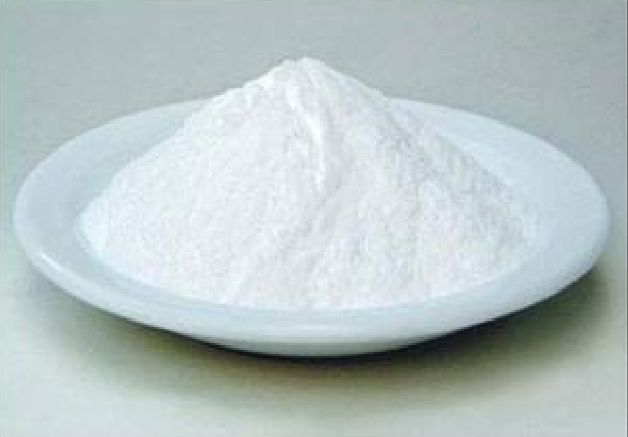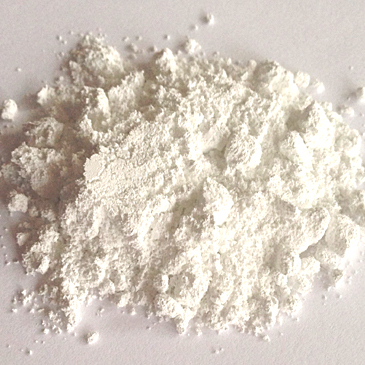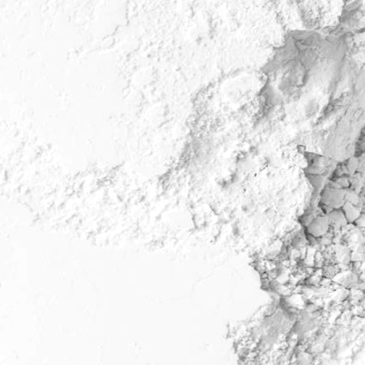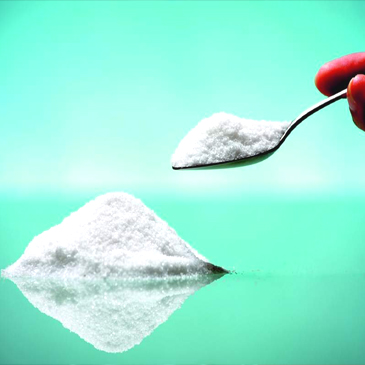Titanium dioxide
Titanium dioxide, also known as titanium(IV) oxide or titania, is the naturally occurring oxide of titanium, chemical formula TiO2. When used as a pigment, it is called titanium white, Pigment White 6 (PW6), or CI 77891.

Generally, it is sourced from ilmenite, rutile and anatase. It has a wide range of applications, including paint, sunscreen and food coloring. When used as a food coloring, it has E number E171. World production in 2014 exceeded 9 million metric tons. It has been estimated that titanium dioxide is used in two-thirds of all pigments, and pigments based on the oxide has been valued at $13.2 billion.
Titanium dioxide occurs in nature as the well-known minerals rutile, anatase and brookite, and additionally as two high pressure forms, a monoclinic baddeleyite-like form and an orthorhombic α-PbO2-like form, both found recently at the Ries crater in Bavaria. One of these is known as akaogiite is an extremely rare mineral.It is mainly sourced from ilmenite ore. This is the most widespread form of titanium dioxide-bearing ore around the world. Rutile is the next most abundant and contains around 98% titanium dioxide in the ore. The metastable anatase and brookite phases convert irreversibly to the equilibrium rutile phase upon heating above temperatures in the range 600–800 °C (1,112–1,472 °F).
Titanium dioxide has eight modifications – in addition to rutile, anatase, and brookite, three metastable phases can be produced synthetically, and five high-pressure forms (α-PbO2-like, baddeleyite-like, cotunnite-like, orthorhombic OI, and cubic phases) also exist。
| Form | Crystal system | Synthesis |
|---|---|---|
| Rutile | Tetragonal | |
| Anatase | Tetragonal | |
| Brookite | Orthorhombic | |
| TiO2(B) | Monoclinic | Hydrolysis of K2Ti4O9 followed by heating |
| TiO2(H), hollandite-like form | Tetragonal | Oxidation of the related potassium titanate bronze, K0.25TiO2 |
| TiO2(R), ramsdellite-like form | Orthorhombic | Oxidation of the related lithium titanate bronze Li0.5TiO2 |
| TiO2(II)-(α-PbO2-like form) | Orthorhombic | |
| Akaogiite (baddeleyite-like form, 7 coordinated Ti) | Monoclinic | |
| TiO2 -OI | Orthorhombic | |
| Cubic form | Cubic | P > 40 GPa, T > 1600 °C |
| TiO2 -OII, cotunnite(PbCl2)-like | Orthorhombic | P > 40 GPa, T > 700 °C |
The cotunnite-type phase was claimed by L. Dubrovinsky and co-authors to be the hardest known oxide with the Vickers hardness of 38 GPa and the bulk modulus of 431 GPa (i.e. close to diamond's value of 446 GPa) at atmospheric pressure. However, later studies came to different conclusions with much lower values for both the hardness (7–20 GPa, which makes it softer than common oxides like corundum Al2O3 and rutile TiO2) and bulk modulus (~300 GPa).
The oxides are commercially important ores of titanium. The metal can also be mined from other minerals such as ilmenite or leucoxene ores, or one of the purest forms, rutile beach sand. Star sapphires and rubies get their asterism from rutile impurities present in them.
Titanium dioxide (B)
Titanium dioxide (B) is found as a mineral in magmatic rocks and hydrothermal veins, as well as weathering rims on perovskite. TiO2 also forms lamellae in other minerals.
Molten titanium dioxide
Molten titanium dioxide has a local structure in which each Ti is coordinated to, on average, about 5 oxygen atoms.This is distinct from the crystalline forms in which Ti coordinates to 6 oxygen atoms.
Spectral lines from titanium oxide are prominent in class M stars, which are cool enough to allow molecules of this chemical to form.

 FR-761
FR-761 FR-767
FR-767 FA-101
FA-101